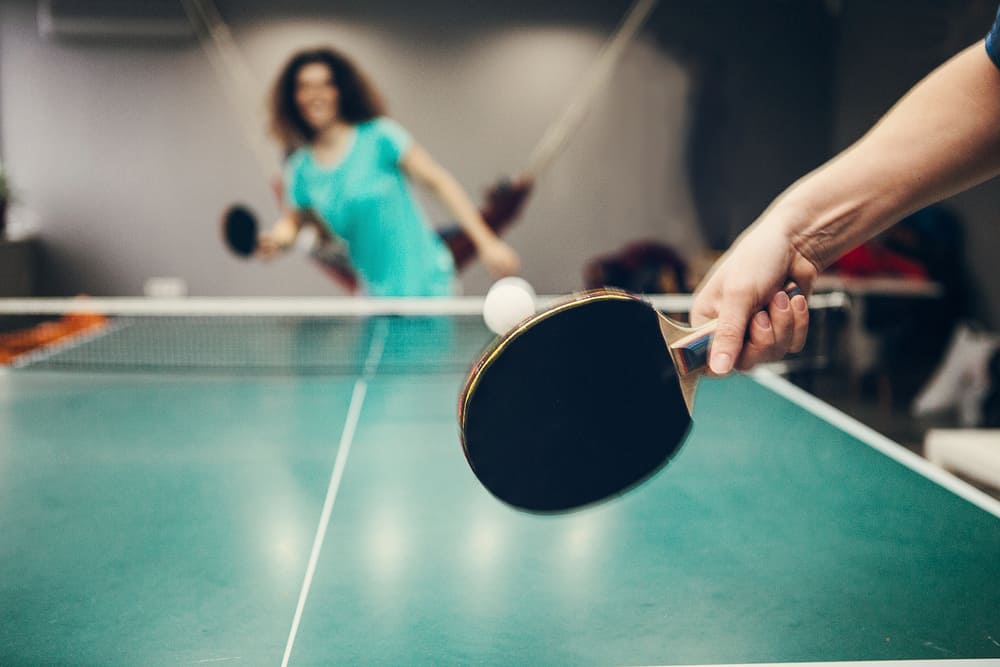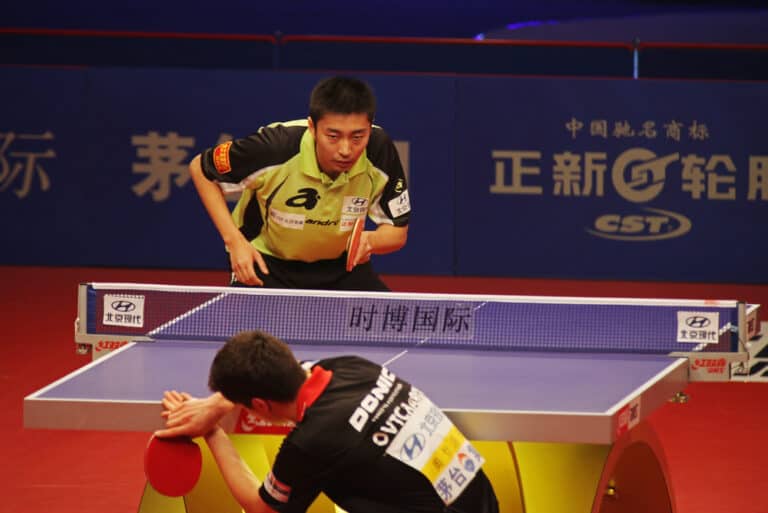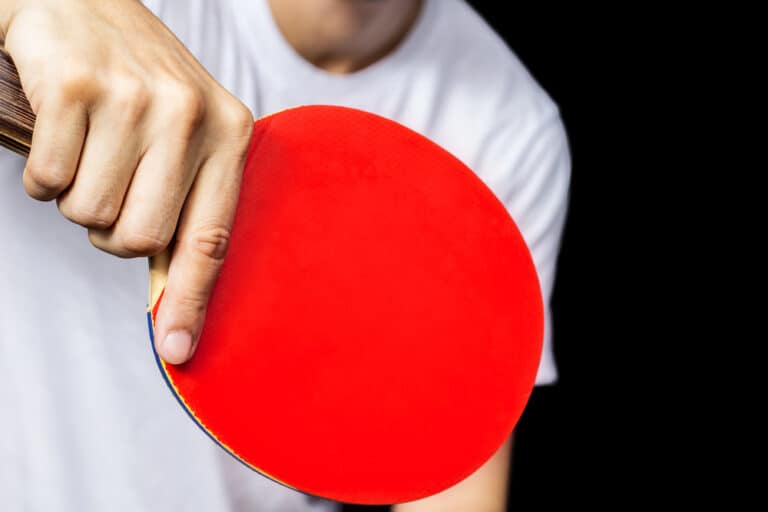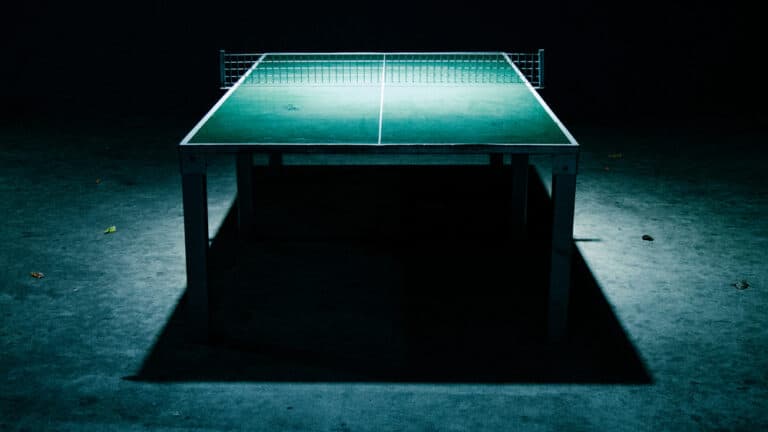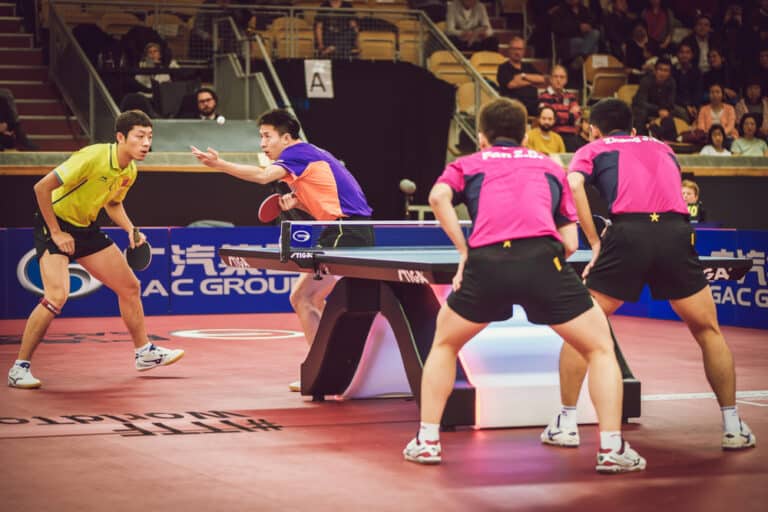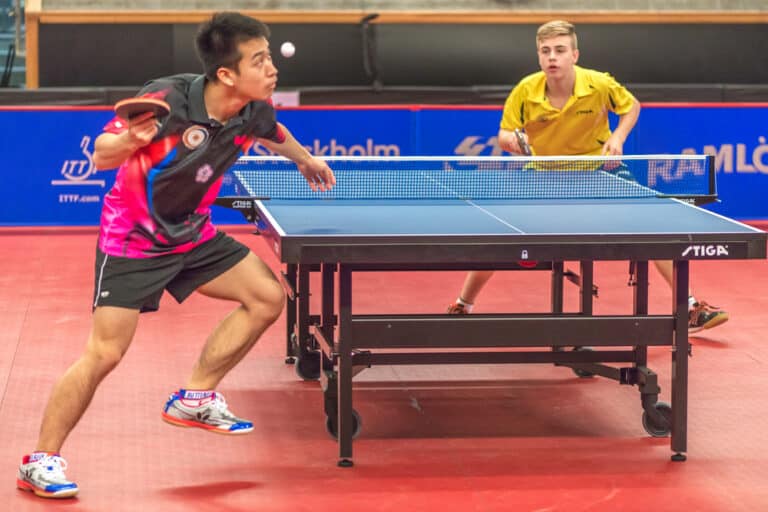Can You Use Your Head In Table Tennis?
“Use your head, man!” Have you ever watched a game and found yourself yelling this at the Olympic table tennis player because he’s making stupid (in your not-so-professional opinion) mistakes? It’s always easier to play the game from this side of the TV screen! But which parts of the body can touch the ball? Can you use your head in table tennis?
In classic table tennis, your hand, going up as far as your wrist, is considered part of your bat. It is the only part of your body that is allowed to touch the ball. However, a game called Headis is played at a table tennis table with a rubber ball, where only the head is allowed to touch the ball.
Rumor has it that table tennis originated in Victorian England as a genteel after-dinner game instead of lawn tennis. Today it is an Olympic sport, watched by millions worldwide and dominated mainly by the Chinese. Headis is not yet an Olympic sport, but who knows, it might get there soon.
Can You Use Your Head In Table Tennis?
Olympic sports have very strict rules which are non-negotiable. Table tennis became an accepted Olympic sport in 1988, with singles and doubles competitions for both men and women. Without going into all the game’s intricate details, let’s take a peek at some of the rules of play.
Table Tennis Rules Regarding Keeping The Ball In Play
The official table tennis rules make for quite a lengthy read. Thankfully, only serious players need to know the details. For our purposes, we can paraphrase some of the almost legal-type language to find out when or if a player can use their head in play.
The ball is in play from the time it leaves the free hand of the person serving until it touches anything besides the table, net, racquet in the player’s racquet hand, or the “racquet hand below the wrist.” It is also still in play until the umpire decides whether the rally is a let or a point is scored. These regulations come from Section 05: Definitions, in the official table tennis rules (rule 5.2).
Although it doesn’t say you may not use your head in table tennis, it is implied because the ball will no longer be in play when it touches anything besides the listed items in rule 5.2.
Rule 5.8 states that a player may not wear, carry or touch the ball while it is in play and has not passed the end line or hit his court since his opponent has hit it. So using your head in traditional table tennis is obstructing the ball.
Rule 10.8 also specifies that a player scores a point if the opponent obstructs the ball. It’s confirmed. The only legitimate way to use your head during table tennis is to strategize.
A Brief History Of Table Tennis
The game of table tennis evolved from an after-dinner game played by upper-class Victorians in the 1880s. They improvised equipment, using cigar box lids for racquets, possibly champagne cork tops for a ball, followed later by a golf ball. A line of books would divide the table into courts.
In 1901, James W. Gibb discovered celluloid balls while on a trip to the USA and decided they were perfect for the game. Table tennis became very popular, and by 1902 there was an unofficial world championship.
Table tennis organizations began to spring up, with the Table Tennis Association being born in 1921. In 1926 it was re-christened the English Table Tennis Association. The International Table Tennis Federation (ITTF) followed suit in 1926.
The sport progressed quickly from a makeshift parlor game to a super-fast, skilled sport. With the high-tech equipment, players can now hit the ball at more than 90 miles per hour!
You Can Only Use Your Head In Headis
Headis is a relatively modern game that evolved almost by accident. The sport is not even twenty years old, having been invented in 2006 by Rene Wegner. Wegner was then a student at Saarland University.
While a football pitch was occupied in Kaiserslautern, Germany, the table tennis tables were open. Two students started heading a rubber ball to one another. It began as a fun game to pass the time, but it has become a sport in its own right now, with several universities listing it as an official sport.
Instead of playing with tiny plastic balls and wooden racquets, players head the 7-inch rubber ball to one another across a table tennis table. The ball weighs about 3.5 ounces.
The rules differ slightly from table tennis too. Volleys are permitted, and you can touch the table or even jump on it to save the shot! Players must touch the ground before heading the ball again. The game consists of two sets, each playing to 11 points. Similar to table tennis, the winner must lead by two points.
The first World Championship took place in 2008, and currently, at least 17 nations take part in the game. Every year there are between ten and twelve World Cup Tournaments. The Headis World Rankings are based on the results of these tournaments.
True to its “silly” origin, the players also don’t use their real names. They choose funny names like Fefe the Gripper, Lord Voldehead, or Headi Potter.
A European Championship began in 2015 and is the only tournament where both genders play in the same game. In 2015 only four countries entered the competition: Germany, Belgium, the Czech Republic, and Switzerland. The following year the Dominican Republic also joined the championship.
In 2011 a Headis Masters category was established. The top eighteen men and eight women from the previous year qualify for the Masters event. They complete the starting field with two wildcards each.
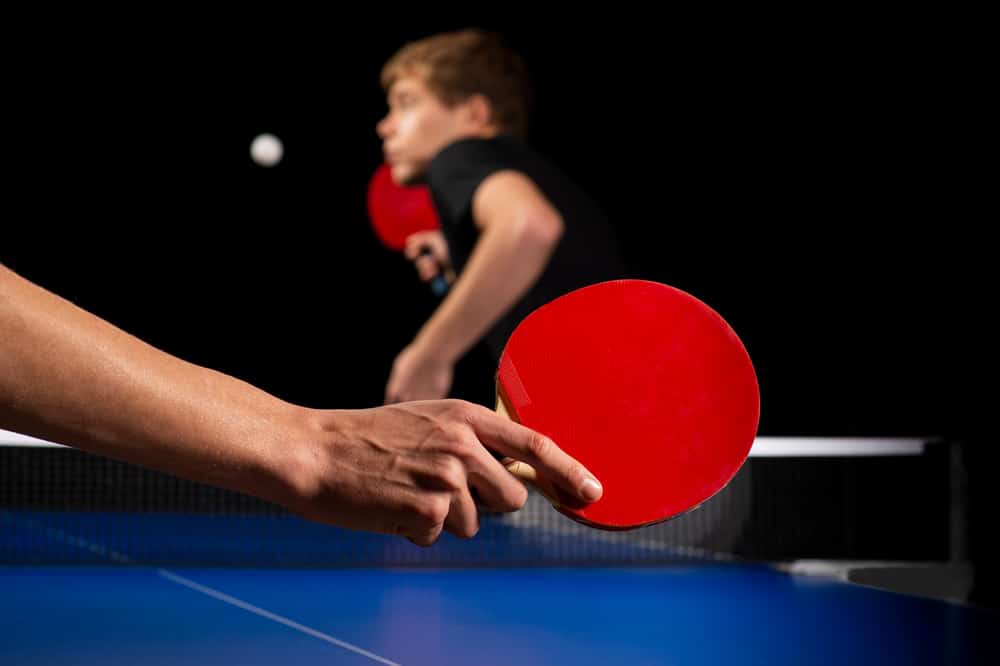
Final Points
With table tennis being an official Olympic sport, the rules are strict, and there is no room for hitting the ball with your head without losing a point. But if you’re in for more fun and acrobatics, Headis may be just the game for you.
You can bounce around, leap onto the tables, and do almost anything to head the ball back to your opponent. Although there is a Masters category, players will probably always be young. Not too many middle-aged people will have the agility to keep up those antics!
References
- https://en.wikipedia.org/wiki/Headis
- https://www.killerspin.com/blogs/tips/table-tennis-rules
- https://www.topendsports.com/sport/list/headis.htm
- https://olympics.com/en/news/description-of-table-tennis
- https://en.wikipedia.org/wiki/Table_tennis
- https://www.dailymail.co.uk/news/article-2808442/Ping-pong-meets-football-headis-sport-invented-Germany-really-starting-kick-off.html

